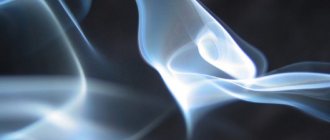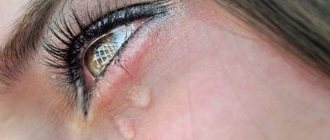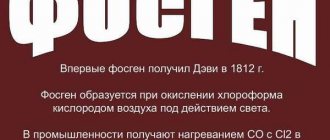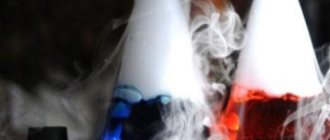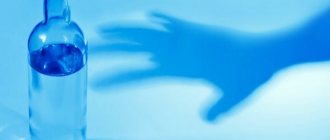Carbon monoxide poisoning (from the colloquial word “burn out”) is an extremely dangerous human condition that can even lead to death. According to statistics, CO poisoning is one of the most common among the main causes of household accidents. And since first aid for carbon monoxide poisoning can be decisive, everyone needs to know the basic rules for providing it.
Carbon monoxide poisoning can occur:
- during a fire;
- in production conditions in which CO is used for the synthesis of organic substances: acetone, methyl alcohol, phenol, etc.;
- in garages, tunnels, and other rooms with poor ventilation - from a running internal combustion engine;
- when staying near a busy highway for a long time;
- in case of premature closing of the stove damper, clogging of the chimney or if there are cracks in the stove;
- when using a breathing apparatus with poor quality air.
Symptoms of carbon monoxide poisoning
Actions for thermal burns
- eliminate the cause of the burn, ensure the safety of the victim and your own;
- remove the remains of burnt clothing (be careful - do not tear off tightly adhered parts of clothing from the affected areas!);
- If possible, cool the burned area of the body under running water for 10-15 minutes. Do not apply ice to a burn.
- Cover the affected area with a sterile or clean bandage, using it as a cover - it should just touch the body. Never use cotton wool as it will stick to the affected area.
- Give the victim plenty of salt mineral water or a soda-salt solution (1 teaspoon of salt and 1 teaspoon of soda per 1 liter of water);
- give the victim any painkillers tablets, 1-2 tablets. Do not give alcohol to the victim;
- for burns of the extremities, perform immobilization (temporary immobilization of the affected area of the body);
- In case of eye burns, rinse them with water for 5-10 minutes;
- in cold weather, warm the victim.
Do not use oils or ointments on a burn. Do not open the blisters, as this can cause infection.
There are many classifications of burns, most of them are based on the clinical course and doctor’s tactics for a particular burn injury. The two most common and clear classifications are by depth of damage and by type of damage.
Clinical and morphological classification
First degree burn. The upper layer of the keratinizing epithelium is affected. It manifests itself as redness of the skin, slight swelling and pain. After 2-4 days recovery occurs. The dead epithelium sloughs off, leaving no traces of damage.
Second degree burn. The keratinizing epithelium up to the germinal layer is damaged. Small blisters with serous contents form. They heal completely due to regeneration from the preserved germ layer in 1-2 weeks.
Third degree burn. All layers of the epidermis and dermis are affected.
Third A degree . The dermis is partially affected; the bottom of the wound is the intact part of the dermis with the remaining epithelial elements (sebaceous, sweat glands, hair follicles). Self-recovery of the skin surface is possible if the burn is not complicated by infection and secondary deepening of the wound does not occur.
Third B degree. Total death of the skin down to the subcutaneous fat.
Fourth degree burn. Death of underlying tissues, charring of muscles, bones, subcutaneous fat.
Mechanism of symptom development
Various types of symptoms are associated with exposure to carbon monoxide. Let us consider in more detail the symptoms of different types and the features of the mechanisms of their manifestation.
Neurological
Nerve cells and the brain demonstrate the greatest sensitivity to hypoxia That is why the development of dizziness, nausea, and headaches indicate that oxygen starvation of cells is occurring. More severe neurological symptoms occur as a result of severe or irreversible damage to nerve structures. In this case, convulsions and impaired consciousness occur.
Respiratory
When breathing quickens, the compensatory mechanism “turns on.” However, if the respiratory center is damaged after poisoning, respiratory movements become superficial and ineffective.
Cardiovascular
Due to an insufficient amount of oxygen, more active cardiac activity is observed, that is, tachycardia . But due to hypoxia of the heart muscle, pain in the heart can also occur. If such pain becomes acute, it means that oxygen has completely stopped flowing to the myocardium.
Skin
Due to the very strong compensatory blood flow to the head, the mucous membranes and skin of the head become blue-red.
First aid for carbon monoxide poisoning
Carbon monoxide is a poisonous gas that is invisible and odorless. A person can die from it within a few minutes. The toxic effect of carbon monoxide is based on the fact that when it enters the human body, it binds to hemoglobin in the blood more firmly and 200-300 times faster than oxygen, blocking oxygen transport processes and blocking the transfer of oxygen to tissue cells, which leads to oxygen starvation.
Carbon monoxide is part of fire smoke and is one of the most toxic combustion products.
Symptoms of carbon monoxide poisoning: headache, choking, pounding in the temples, dizziness, chest pain, dry cough, nausea, vomiting, visual and auditory hallucinations, increased blood pressure, motor paralysis, loss of consciousness, convulsions
Actions for carbon monoxide poisoning
- If you have carbon monoxide poisoning, call a doctor
- In mild cases of poisoning, you need to let the victim sniff ammonia on a cotton swab, drink coffee or strong tea
- To help those who have lost consciousness, you need to take them out into the fresh air, free them from clothing that is restricting their breathing, and pour cold water over their heads. You can pour water with a few drops of ammonia into your mouth.
- If the injured person breathes heavily, with effort, perform artificial ventilation. Continue until the victim comes to his senses.
- Place the victim in bed in a smoke-free room, give him black coffee, and warm him with heating pads.
- Keep the victim's attention, make him talk (sing, count). Don't let him forget for an hour.
Specific effects of carbon monoxide on humans
Poisoning caused by carbon monoxide is considered a form of intoxication that occurs due to the ingestion of CO into the body and causes an acute painful condition that, without specialized medical care, leads to the death of the victim.
The specificity of the effect of carbon monoxide on humans is that very often it is not possible to recognize it at all, since the substance is practically imperceptible. Therefore, in order to protect oneself, everyone’s task is to clearly understand in what situations, often arising in everyday life, such a threat may arise.
- Firstly , this often happens if a person spends a long time in a highway area with heavy traffic, or in a parking lot. Vehicle exhaust contains carbon monoxide in a volume of 1 to 3%, and in order to get poisoned, it is enough for the amount of this substance to be 0.1% in the air. Car owners who work with the car for a long time in a closed garage also face a similar risk, especially when the engine warms up for a long time.
- Secondly , the risk of poisoning also increases for those people who spend a long time in cramped rooms where ventilation is poor and heating and gas water heaters are functioning. There is much less oxygen in the room, and there is much more carbon monoxide, continuously released during fuel combustion.
- Thirdly , cases of poisoning are possible due to violations of the operating procedures for stove installations by the owners of bathing establishments, country cottages and houses. A prematurely closed stove damper can cause an increase in CO levels in the room and subsequent poisoning.
- Fourthly , those who work at production facilities with an increased level of danger or are caught in the epicenter of a fire can suffer from the effects of this toxic substance.
First aid for heatstroke
Heat stroke is overheating of the body with simultaneous low heat transfer.
Symptoms
- general weakness;
- cold fine sweat, primarily above the upper lip, in the nasolabial fold, on the face;
- severe pallor;
- headache;
- nausea;
- increased and weakened pulse;
- rapid and shallow breathing;
- dilated pupils;
- stunned;
- uncertainty of movements, unsteady gait, occasional fainting;
- increase in body temperature to 39-40°C.
Severe heat stroke usually develops suddenly. The face is hyperemic (reddened), later – pale bluish. Cases of changes in consciousness (from mild to loss of consciousness), convulsions, delirium, hallucinations, increased body temperature to 41-42°C, and cases of sudden death have been observed.
Actions for heat stroke
- quickly move the victim to a quiet, cool room or in the shade, lay him on his back, place a pillow or folded blanket under his head, and remove clothing that is interfering with normal breathing;
- Give the victim cold (preferably mineral) water, strong tea, coffee, apply a compress from a towel or napkin soaked in cold water to the head, wipe the body with cold water;
- If there are burns, treat them;
- in the absence of consciousness, ensure patency of the upper respiratory tract.
General information
If carbon monoxide , then we are talking about a serious pathological condition. of carbon monoxide enters the body .
This condition is dangerous to health and life, and if you do not seek help from specialists in a timely manner, death from carbon monoxide may occur.
Carbon monoxide (carbon monoxide, CO) is a product that is released during combustion and enters the atmosphere. Since poisonous gas has no smell or taste, and it is impossible to determine its presence in the air, it is very dangerous. In addition, it can penetrate through soil, walls, and filters. Many people are interested in the question of whether carbon monoxide is heavier or lighter than air; the answer is that it is lighter than air.
That is why it is possible to determine that the concentration of carbon monoxide in the air is exceeded using special devices. You can also suspect CO poisoning if a person rapidly develops certain symptoms.
In urban environments, the concentration of carbon monoxide in the air is increased by vehicle exhaust gases. But poisoning from car exhaust gases can only occur at high concentrations.
Causes of poisoning
In 80% of all diagnosed cases, fumes occur in domestic fires. The reason is the banal negligence of the owner, who neglects fire safety rules when lighting a stove or fireplace, or forgets to adjust the chimney in the bathhouse. Often a dangerous situation arises when an unauthorized change in the design of a pipe or ventilation occurs.
Poisoning can also occur in the following situations:
- using a gas water heater in an apartment with the ventilation duct closed;
- long burning of kerosene appliances;
- non-compliance with safety regulations at work;
- smoldering faulty electrical wiring;
- being in a garage with the gates closed and the car engine running.
Sometimes such intoxication can occur when smoking a hookah. This happens to inexperienced people who do not follow the dosage of tobacco and use it too often.
You might be interested in: exhaust gas poisoning in different situations.
What does inpatient treatment consist of?
The main method of treatment for poisoning with fumes is to keep the victim in a hyperbaric pressure chamber. With the help of this equipment, carboxyhemoglobin is removed from the body, which interferes with the full supply of oxygen to all tissues of the body.
In the hospital, intravenous administration of solutions to detoxify the body continues. The volume of medical hospital care depends on the degree of injury to the person, associated injuries, and skin burns. The patient is given antibacterial drugs that prevent the development of pneumonia. The patient constantly receives oxygen mixtures. The duration of hospitalization depends on the condition of the victim.
Anyone can be poisoned by fumes. Knowing the basic rules of first aid can save the life of the person next to you. During its provision, you must be sure of your safety and not be in a smoky room. The victim should immediately call an ambulance, which will stabilize the patient’s condition and take him to the intensive care unit.
Basics of Cardiopulmonary Resuscitation
Cardiopulmonary resuscitation consists of chest compressions, artificial respiration and intravenous administration of drugs that stimulate myocardial contraction (adrenaline, atropine). In domestic conditions, when providing first aid, no medications are administered.
Please note that before performing resuscitation, you need to make sure that the person’s heart is not beating and there is no breathing. It is best to check the pulse at the aorta (a large blood vessel that runs on the anterolateral surface of the neck), and listen to breathing by placing your ear to the chest.
you should only perform chest compressions
when performing CPR To do this, place one hand on top of the other and press them on the middle third of the person’s sternum.
The elbows should be straight. The chest should be pressed 3-4 cm. The frequency of chest compressions is 100/min. The rhythm of resuscitation is similar to the tempo of the song “Staying alive” by the Bee Gees. This musical composition is used to teach the basics of CPR (cardiopulmonary resuscitation) at medical universities and colleges.
If there are two of you, you can add artificial respiration to the resuscitation measures. To do this, open the person’s mouth using your hand or gauze and clean it of excess contents (vomit, blood, tooth fragments). Then inhale mouth to mouth through gauze or cloth. Every 15 chest compressions, you need to take 2 breaths.
Every minute you should quickly monitor the presence of a pulse in the aorta and breathing. If they do not appear, continue resuscitation until the medical team arrives. Change places every 5 minutes, this way you will save energy.
Consequences
The consequences and complications of CO poisoning are divided into early and late. The early ones include:
- cerebral edema;
- pulmonary edema;
- arrhythmias;
- neuritis;
- deterioration of vision and hearing.
The effect of carbon monoxide on the human body is so dangerous that the consequences can last a long time. Late complications - myocardial infarction, inflammation of the heart muscle (myocarditis), acute heart failure. In addition, during hypoxia, cell death occurs in some areas of the brain, which is fraught with a decrease in cognitive functions, amnesia, the development of psychoses, and chronic fatigue. Some patients, after suffering from intoxication, experience kidney dysfunction, liver dysfunction, bronchial asthma and other incurable diseases.
Treatment of poisoning
Medical care for carbon monoxide poisoning is carried out in the intensive care unit. The patient receives the next portion of the antidote. Oxygen therapy is used using an oxygen cushion, a cylinder or a centralized O2 supply. This helps to significantly reduce the degree of brain hypoxia and prevents coma. It is also possible to use carbogen (a mixture of oxygen and carbon dioxide). In severe cases, the lungs are ventilated using a ventilator or the patient is placed in a pressure chamber (hyperbaric oxygenation).
Further treatment includes:
- Irradiation of the skin with a quartz lamp: carboxyhemoglobin molecules are quickly destroyed and subsequently excreted in the feces without harm to the body. Carboxyhemoglobin levels are monitored by a blood test.
- To maintain the activity of the heart muscle, injections of Cordiamin, B vitamins, tocopherol, caffeine, and atropine are used.
- To dilate the bronchi and prevent their spasm, hormonal therapy with inhaled corticosteroids is prescribed.
- In case of a serious condition of the patient, treatment is supplemented by repeated blood transfusions and blood purification using plasmapheresis.
Therapy continues until the body is completely cleansed of toxic products. The patient is prescribed a special diet that does not overload the pancreas and liver and stimulates their recovery. Medicines are used to maintain the nervous system, improve brain function, and diuretics to remove toxins in the urine.
conclusions
Thus, carbon monoxide poisoning is a very dangerous condition. The higher the concentration of gas, the more likely the fatal outcome. Therefore, it is very important to be extremely careful in observing all the rules of prevention, and at the first suspicion of such poisoning, immediately call emergency help.
Education: Graduated from Rivne State Basic Medical College with a degree in Pharmacy. Graduated from Vinnitsa State Medical University named after. M.I. Pirogov and internship at his base.
Work experience: From 2003 to 2013 – worked as a pharmacist and manager of a pharmacy kiosk. She was awarded diplomas and decorations for many years of conscientious work. Articles on medical topics were published in local publications (newspapers) and on various Internet portals.
source



